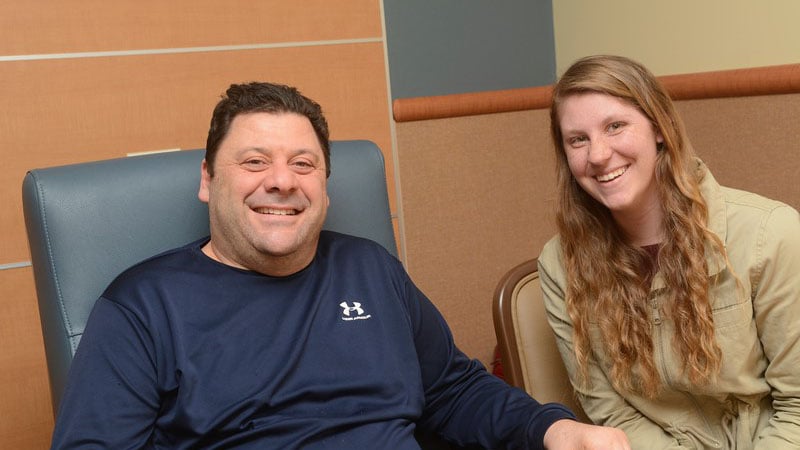Key Takeaways
- Women face an increased risk of stroke, especially between ages 55 and 75.
- Certain health conditions raise women's risk of stroke, including preeclampsia, higher estrogen levels, HRT for menopause, and more.
- Having regular visits with a primary care provider, exercise, good quality sleep, and taking medication can help reduce the risk of stroke.
Strokes are a significant risk for women’s health, especially between the ages of 55 and 75. According to the CDC, strokes account for twice as many deaths in women as breast cancer.
The good news? More women and their health providers are recognizing the signs and risk factors that can lead to stroke and are taking precautions to reduce those risks.
We asked Marla Bruns, MD, PhD, for her insight into how women can better assess risk factors for stroke. As a cognitive neurologist and co-director of Rochester Regional Health’s Memory Center at Unity Hospital, Dr. Bruns has a deep level of expertise and understanding in this field and provides answers to questions about stroke risk.
What causes a stroke?
The system that carries blood throughout the body is called the vascular system. Thinking about the vascular system like plumbing in a house is helpful in understanding strokes.
“You want to keep the pipes as open and clear as possible,” Dr. Bruns said. “Controlling factors such as blood pressure and cholesterol can limit the narrowing of arteries and the amount of plaque that builds up on artery walls.”
Sometimes, a clot can form in other areas of the body, such as the heart or a leg. That clot could break off, travel through the bloodstream up to the brain, and potentially block blood flow to the brain, which would cause a stroke.
Risk factors for stroke
For men and women, risk factors for stroke are similar in many areas. These include:
- High blood pressure
- High cholesterol
- Smoking
- Obesity
- Diabetes
- Genetics
- Sleep apnea
- Heart defects
- Atrial fibrillation
Specifically for women, certain health conditions can raise risk levels for stroke. Some of these risks may include:
- High blood pressure during pregnancy
- Higher levels of estrogen, especially with certain types of birth control
- Triptan medications for migraines (cause blood vessels to constrict)
- Certain types of cancers
- Hormone replacement therapy (HRT) for menopause
- Certain supplements such as calcium (if given without vitamin D)
According to Dr. Bruns, she sometimes sees young people with an unusual cause of stroke: neck trauma (e.g., a car accident or high-torque manipulation at a chiropractor).
“Sometimes blood vessels in the neck will become dissected from the rapid movement of the neck,” Dr. Bruns said. “As a blood vessel heals itself with a clot, sometimes a piece of a clot can break off and travel to the brain – causing a stroke.”
Preventing a stroke
There are a number of methods to reduce the risk of stroke – many of which are things patients can do on their own. Being as proactive as you can goes a long way toward helping your health.
Regular provider visits
Make the time to attend regularly-scheduled appointments with your primary care provider. Checking in with someone who knows your personal medical history and family history can help a physician recognize potential warning signs of a stroke.
“Strokes are not just a health condition for older men or older people in general - it can happen with younger women as well,” Dr. Bruns said. “The risk factors are things that you can modify, but knowing your family history is super important.”
Physical activity
Research and life experience show remaining active throughout your life benefits both your body and mind.
Cardiovascular exercise in particular does a lot of good for your overall health. Keeping the heart healthy with something as simple as walking for 20 minutes each day is shown to reduce risk for a number of health conditions.
Sleep study
Since sleep apnea places an individual at a higher risk for stroke, individuals who are overweight and snoring loudly should consider pursuing a sleep study, or polysomnogram.
Treating sleep apnea can result in positive effects on other related health issues, as well (e.g., memory loss).
Medication
Individuals who suffered a stroke may be put on anti-platelet medications such as aspirin or Plavix to avoid risk of another stroke. If they have atrial fibrillation (aFib), providers sometimes prescribe an anticoagulant such as Eliquis or Xarelto.
Even with all of these steps to prevent stroke, they can still happen sometimes. In these cases, it is important to remember that the quicker a stroke is treated, the better the chance of recovery.
One of the easiest ways is to remember the acronym B.E.F.A.S.T.:
Balance
Eyes
Facial drooping
Arm weakness
Speech difficulties
Time to call 911










